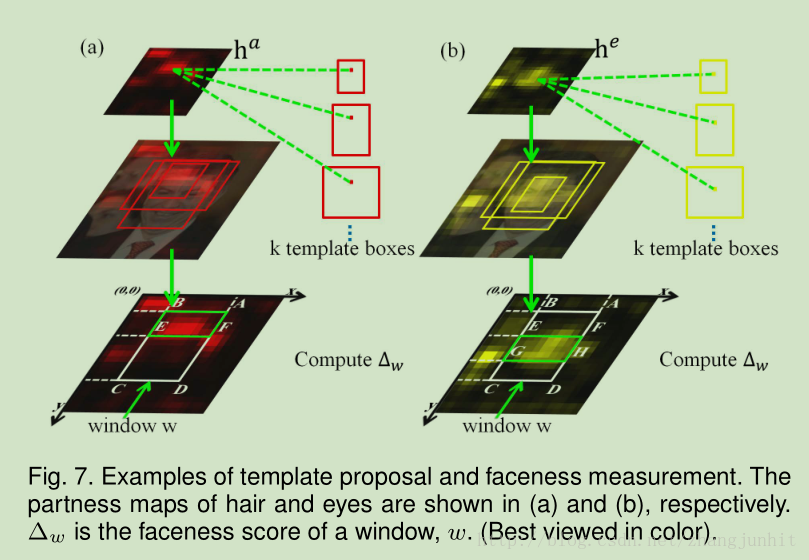转自:https://blog.csdn.net/zhangjunhit/article/details/78337570?locationnum=4&fps=1
From Facial Parts Responses to Face Detection: A Deep Learning Approach ICCV2015
http://shuoyang1213.me/projects/Faceness/Faceness.html
https://pan.baidu.com/s/1qWFwqFM Password: 4q8y
本文针对人脸检测问题,从 facial attributes 的角度来解决人脸检测中的 severe occlusions 和 large pose variation
在人脸检测中使用 facial attributes supervision 的好处:
1)Discovering facial parts responses supervised by facial attributes 人脸具有唯一的结构
2) Computing faceness score from responses configurations 由人脸的局部到整体的推导
3) Refining the face hypotheses 人脸候选区域的进一步验证


本文和我们以前的工作【24,25】相比较,主要的改进在于设计了一个更有效的CNN,提高了速度和精度,具体改进有:
1)以前我们是用独立的网络来学习各个 facial parts,现在 我们共享了这些部件特征, share feature representations between these attribute-aware networks,这么做降低网络的参数量(( ∼ 83% fewer parameters),同时提升了网络的鲁棒性
2)候选区域提取模块嵌入到整个网络中,而不是独立的模块 This design not only leads to improved computation efficiency but also higher recall rate
3)更多的分析和实验
3 Faceness-Net
算法的整个流程是首先进行人脸局部特征的检测,然后从局部到整体得到人脸候选区域,再对人脸候选区域进行人脸识别和矩形框坐标回归
每个人脸局部特征我们使用一个CNN来检测 attribute-aware networks,一共五个特征属性: hair, eyes, nose, mouth, and beard
有了局部特征属性的响应,有局部推理出人脸候选区域

Second stage
训练一个多任务的CNN来完成人脸二分类和矩形框坐标回归 face classification and bounding box regression are jointly optimized
Network structure 网络结构




3.3 Generating Candidate Windows
一般来说有两种方法可以用于候选区域生成:Generic object proposal 和 Template proposal(RPN)。但是这两种方法都是针对 generic objects 设计的,not suitable to propose windows specific to faces。我们提出了一个针对人脸的好方法 3.4

3.5 Face Detection
These face proposals can be subsequently fed to the multi-task CNN
fine-tune the first branch of the multi-task CNN for face classification and the second branch for bounding box regresssion




